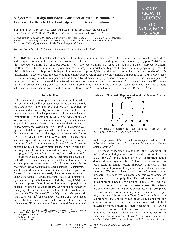摘要
Cation-templated self-assembly of 1,omega-bis(pyridinium)alkanes (omega = 1-6) with cuprous thiocyanate was studied, and six sparse polymeric thiocyanate frameworks were obtained and characterized by X-ray crystallography: {(bpm)[Cu(NCS)(4)]}(n) (1), {(bpe)[Cu-2(NCS)(4)]}(n) (2), {(bppp)[Cu(NCS)(3)]}(n) (3), {(bpbt)[Cu(NCS)(4)]}(n) (4), {(bppt)[Cu-2(NCS)(4)])(n) (5), and {(bph) [Cu-2(NCS)(4)]}(n) (6) (bpm = 1,1'-bis(pyridinium)methylene, bpe = 1,2-bis(pyridinium)ethane, bppp = 1,3-bis(pyridinium)propane, bpbt = 1,4-bis(pyridinium)butane, bppt = 1,5-bis(pyridinium)pentane, bph = 1,6-bis(pyridinium) hexane). The structures consist of 0-3-dimensional frameworks with the bispyridinium cations trapped within host network cavities. Compound 1 has a 3D porous (6,3)/(6,4) joint topology structure, compounds 2 and 5 have two-dimensional polypseudorotaxane interlocked structures, compound 3 has a dimeric structure, compound 4 has a two-dimensional honeycomb structure, and compound 6 exhibits an interesting l D hanging ladder-shaped complementary chain structure. The third-order NLO effect of 3 was studied by Z-scan techniques. The dimer exhibits self-focusing optical nonlinearities, and the effective third-order NLO refractive index (n(2)) value is 3.03 x 10(-11) esu.
